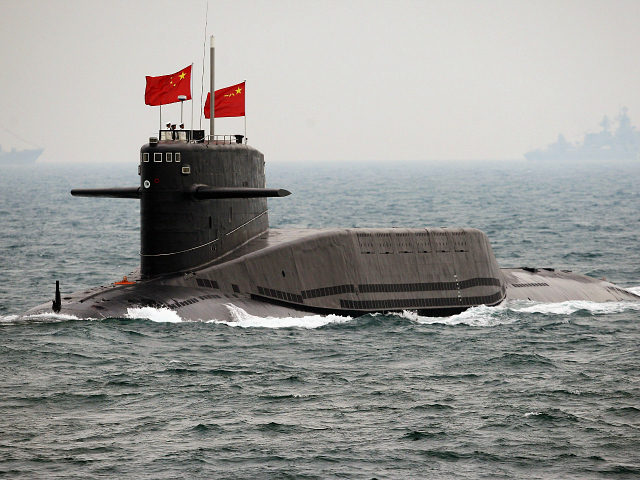China has increased its civilian activities in the Arctic in recent years, with a potential eye towards deploying submarines to the region as a deterrent against nuclear attacks, according to a Pentagon report on China’s military power published Friday.
“It looks like there is a lot of ambition and then I think it’s probably multi-faceted in terms of their objectives,” said Randall Schriver, assistant secretary of Defense for Indo-Pacific security affairs, said at a Pentagon briefing on Friday.
“Whether or not [the Arctic] becomes an access point for safe-harbor for strategic assets such as ballistic-missile carrying submarines, it is a possibility in the future, and one we’ll watch very closely,” he added.
Deploying nuclear-armed submarines to the Arctic would presumably improve China’s second-strike capability in the event of nuclear war, which could deter a future attack on China.
The report, which is released annually, had a “special section” on Chinese activities in the Arctic.
It said that China’s activities in the Arctic have increased since gaining observer status on the Arctic Council in 2013. China published its first Arctic strategy promoting a “Polar Silk Road” and declared itself a “Near-Arctic State” in January 2018.
The strategy identifies China’s interests as access to natural resources, securing Arctic shipping lanes, and promoting an image of a “responsible major country” in Arctic affairs, according to the report.
It also highlights China’s icebreaker vessels and research stations as integral to the strategy’s implementation.
China already has research stations in Iceland and Norway, operates one Ukrainian-built icebreaking research vessel, named the Xuelong, the report said. In 2016, China commissioned the first of a new series of “ice-capable” patrol boats.
In September, China also launched its second icebreaking research vessel, the report said. The domestically-built boat, named the Xuelong 2, will be able to break ice 1.5 meters thick, and be the first polar research vessel that can break ice while moving forwards or backwards.
“Civilian research could support a strengthened Chinese military presence in the Arctic Ocean, which could include deploying submarines to the region as a deterrent against nuclear attacks,” the report said.
China’s activities in the region have caused concern, according to the report.
“Arctic border countries have raised concerns about China’s expanding capabilities and interest in the region. The government of Denmark has publicly expressed concern about China’s interest in Greenland, which has included proposals to establish a research station in Greenland, establish a satellite ground station, renovate airports, and expand mining,” the report stated.
“In September 2018, a Russian expert at the Russian International Affairs Council stated the Russian Federation was strongly opposed to foreign icebreakers operating on the Northern Sea Route, including U.S. and Chinese icebreakers,” it said.
However, the report also said the region could be an area of cooperation for Russia and China.
“Outside potential friction over the Northern Sea Route, the Arctic region is an area of opportunity for Sino-Russian commercial cooperation, in addition to energy development and infrastructure projects such as the Yamal liquefied natural gas project.”

COMMENTS
Please let us know if you're having issues with commenting.